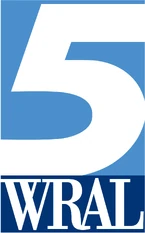Is the local news outlet, WRAL, truly delivering on its promise of being the go-to source for North Carolina, or has it stumbled, losing its way in the digital age? A significant portion of the community believes the station is falling short of its once-stellar reputation, particularly with its digital offerings, and that it's time to seriously reevaluate its approach to news delivery.
The digital landscape has transformed how we consume information, and for many, WRAL’s foray into the world of mobile apps has been a disappointment. The r/raleigh subreddit, a digital town square for the region, has seen an outpouring of frustration, with users branding the new WRAL app as hot garbage. This sentiment isn't just limited to a handful of disgruntled users; it represents a broader concern about the quality and user-friendliness of the station's digital platforms. Complaints often center around clunky interfaces, slow loading times, and a general lack of intuitive design—all critical factors in a market where consumers have a wealth of options at their fingertips.
WRAL, headquartered in the heart of downtown Raleigh, NC, and with local reporters actively covering the Research Triangle Park area, has long been a staple in North Carolina homes. Its broadcasting reach extends to Raleigh, Durham, Fayetteville, Chapel Hill, Rocky Mount, Morrisville, Clayton, Cary, Garner, Wake Forest, Apex, Fuquay-Varina, and Holly Springs. However, the question remains: is WRAL adapting to the ever-evolving demands of its audience, especially the digital natives? While the traditional broadcast model continues to hold value, the younger demographics, the ones who shape the future of the news landscape, are primarily consuming content online and via mobile devices. If WRAL's digital presence is failing to meet their expectations, the station risks losing relevance.
The station's YouTube channel, a hub for news, weather, and sports, provides a window into WRAL’s commitment to covering the region. Daily National News Updates are available, along with local sports and Raleigh weather reports. However, the success of these efforts ultimately depends on the quality of the delivery. The digital tools, like the app, need to function flawlessly to engage viewers, not frustrate them. The call for improvements echoes throughout social media, with many commenting on the quality of the content. The importance of community engagement, a cornerstone of any successful news organization, relies heavily on the platform's capability to facilitate a smooth user experience.
Beyond the digital debate, WRAL is more than just a news source; it is a family. Evidence of this can be seen in the congratulations extended to Ashley and her upcoming arrival, highlighting the human side of the station and demonstrating the bond between its employees. Such gestures build goodwill and foster a sense of community, enhancing the brand beyond its news coverage. However, the personal and professional lives of the individuals within WRAL can also come under public scrutiny, especially when their individual stories intersect with the station’s broader coverage.
The recent loss of Cairo, the beloved dog of Gerald Owens, journalist at WRAL News, touched the community. Owens shared the news of Cairo's passing due to dilated cardiomyopathy and congestive heart failure. This deeply personal experience, shared with the public, underscores the fact that the news presenters, like Owens, are more than just faces on television; they are human beings with lives and feelings, adding a layer of emotional depth to their professional roles.
The closure of Poe Hall at North Carolina State University due to the discovery of toxic chemicals highlights the role WRAL plays in investigating and reporting on complex local issues. This ongoing story demands thorough investigation and reporting. The presence of thousands of students and hundreds of workers adds urgency to the reporting. The health concerns related to these chemicals demand a clear presentation of facts, ensuring the public understands the implications and associated risks. In a scenario like this, the importance of the news agency’s role is amplified, because the station has the opportunity to provide timely and critical information.
A casual observation highlights the human side of the station, with references to height differences between Gerald Owens and others. Such anecdotes help create a connection with the audience, making the station approachable and adding a sense of personality to its reporting.
The station’s social media presence, particularly on Instagram, offers a snapshot of its day-to-day activities. The posts show a mix of images and videos, covering everything from news coverage to behind-the-scenes moments. The station's active presence and the large following indicate the degree of its popularity, highlighting its reach within the community. The station's ability to connect with viewers on various platforms is key to its long-term success.
However, the challenges remain. The question is, will WRAL effectively adapt to the digital world while staying true to its mission of providing reliable and comprehensive information to the communities it serves? The concerns of the community are important, and it is crucial for WRAL to acknowledge and address these concerns. Whether the station can maintain its position as a trusted information source, remains an open question that only time and action can answer.
The future will depend on the decisions made today. The station's ability to listen to its viewers, to adapt to changing technology, and to maintain the trust of the public will determine whether WRAL continues its legacy or fades into the background of a rapidly changing media landscape.



